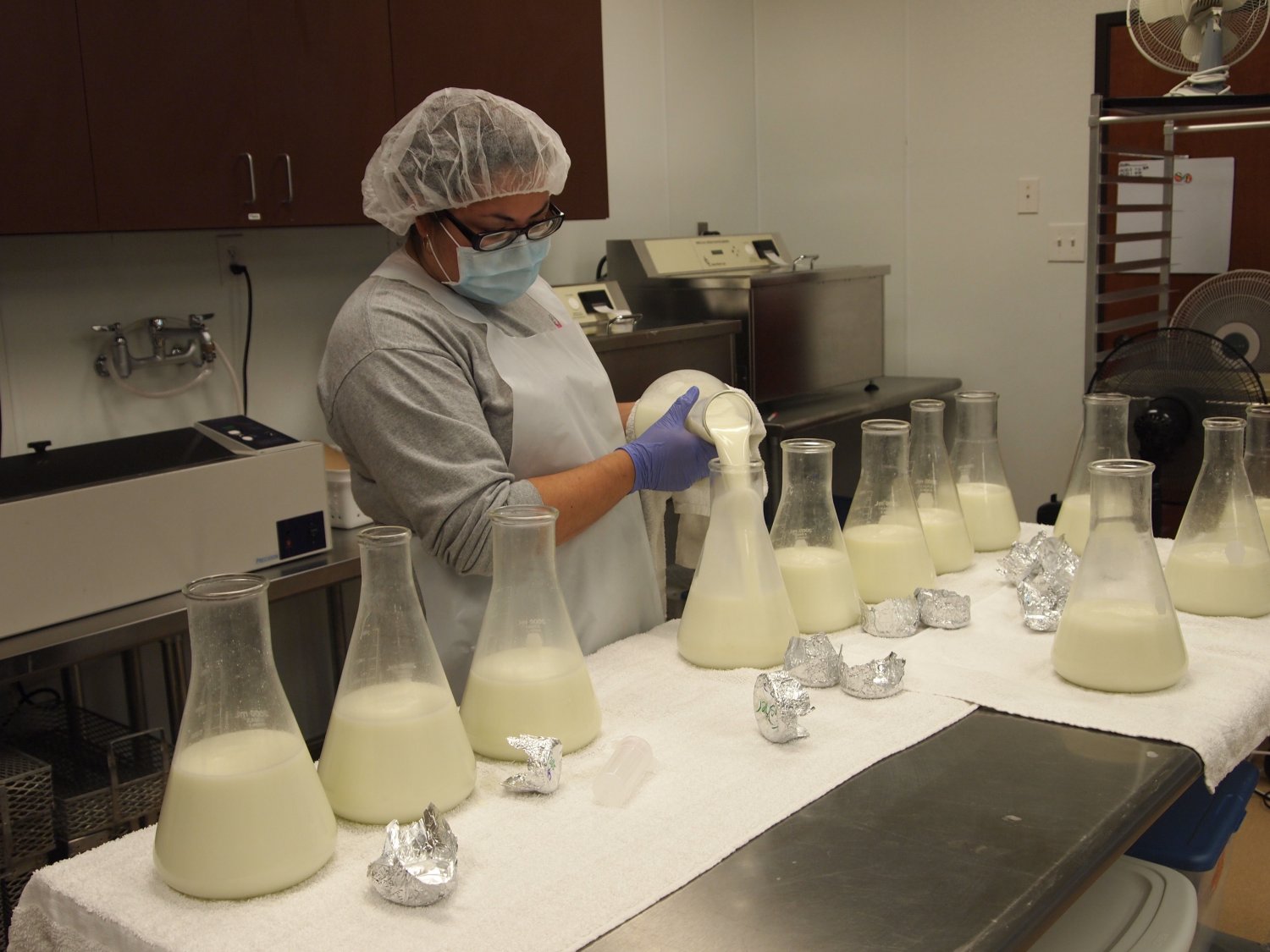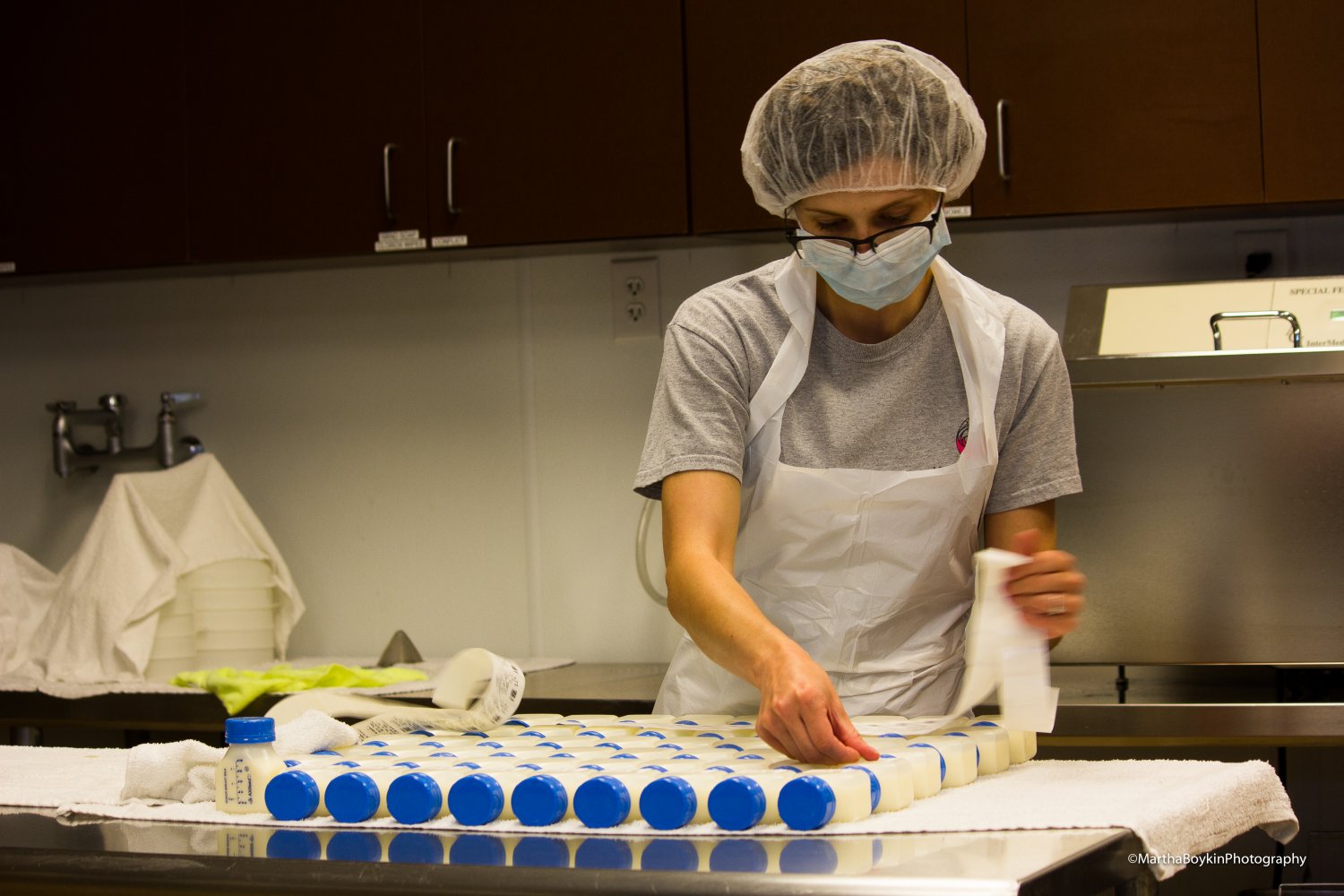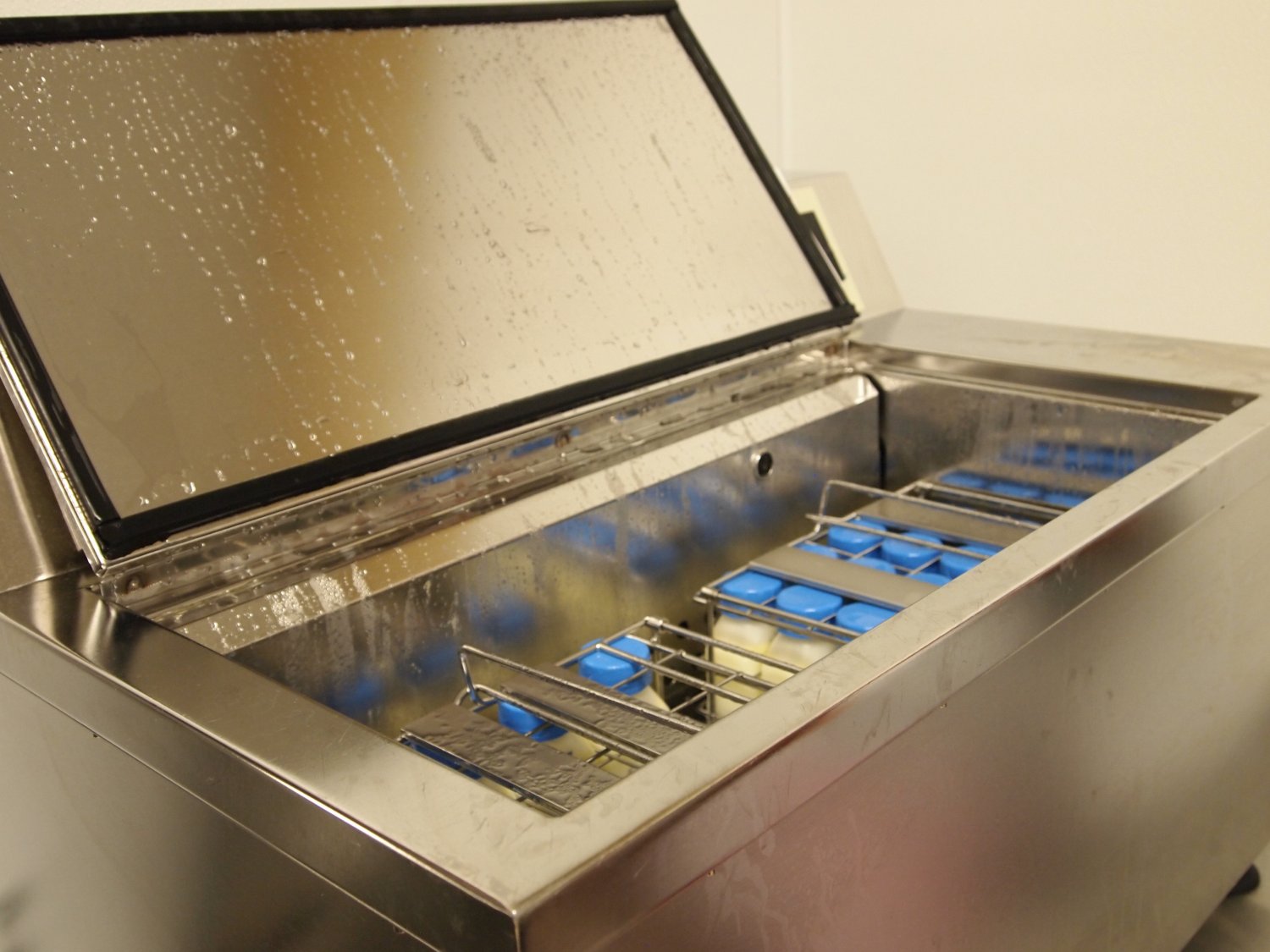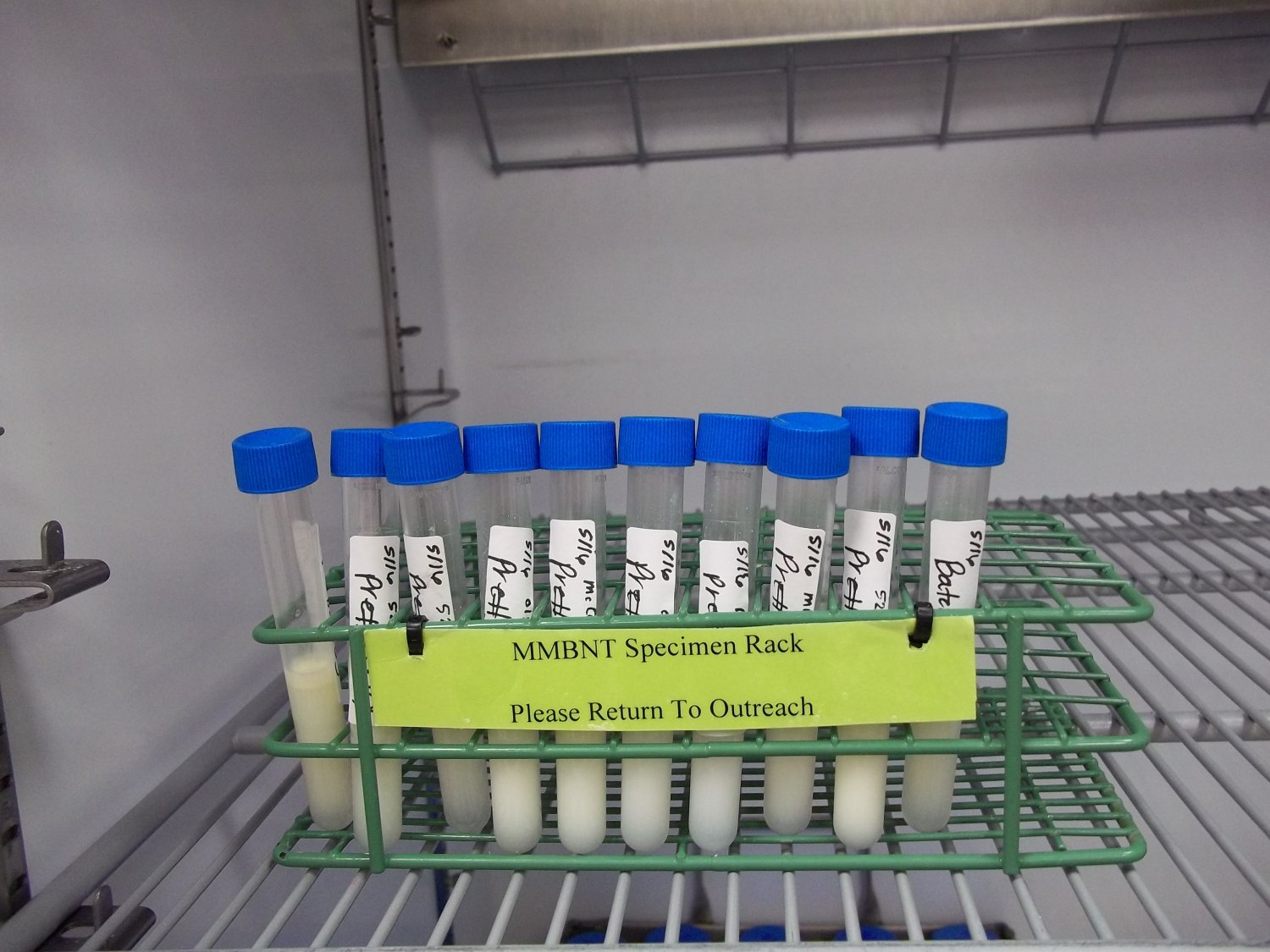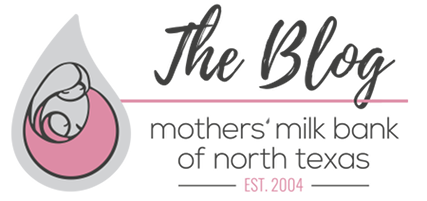Following Milk Through the Lab
Thursday, 6/9/2016
Originally published in June 2016, this post was updated in October 2017. To learn about how you can support MMBNT, click here.
Every ounce of donor milk that passes through Mothers’ Milk Bank of North Texas (MMBNT) goes through an intricate process in our lab to ensure it is safe for the babies we serve. The lab is an essential place in our office, but what happens behind its walls may seem like a mystery to those who are unfamiliar with it. Today, we’re breaking down the process to explain the journey from donor to bottle.
Milk arrives frozen from approved donor mothers and from more than 40 collection sites called depots. It is stored in the milk bank and monitored 24 hours a day at -20 degrees Celsius.
Each day, the lab supervisor selects a “pool” of approximately 3,000 – 3,200 ounces of milk to fill both hospital and outpatient orders. Lab technicians start the day by thawing the pool, systematically pouring it into flasks and mixing it thoroughly and efficiently. A sample is run through a nutritional analyzer, which reveals important information about calorie and protein content.
Physicians order milk based on specific calorie counts and protein levels to meet a baby’s nutritional and medical needs. Because of variations from one mom’s milk to the next, milk can be mixed together to reach targeted levels.
Milk is then poured into bottles and secured with tamper-resistant lids. Hospitals typically order small 100mL bottles (a little more than 3 ounces). Outpatient babies receive larger 200mL bottles (almost 7 ounces). Each bottle is labeled with a barcode linked to state-of-the-art software, which tracks every drop of milk from donor to baby. This technology ensures patient safety by eliminating human error and tracking expiration dates.
Bottles are then pasteurized using the Holder method of pasteurization. Milk is heated to 62.5 degrees Celsius for 30 minutes. After pasteurization, the milk is immediately placed in an ice bath and a random sample from each batch is pulled for microbiological testing. Milk is stored in a walk-in freezer for 48 hours until the results from microbiological testing come back. Once approved, milk is dispensed to hospitals or outpatients.
Safe donor milk is essential for medically fragile infants. Next time you’re at MMBNT, take a look through the lab window and see for yourself the “milk magic” in action.
To learn how you can support the life-saving mission of Mothers’ Milk Bank of North Texas, click here.
